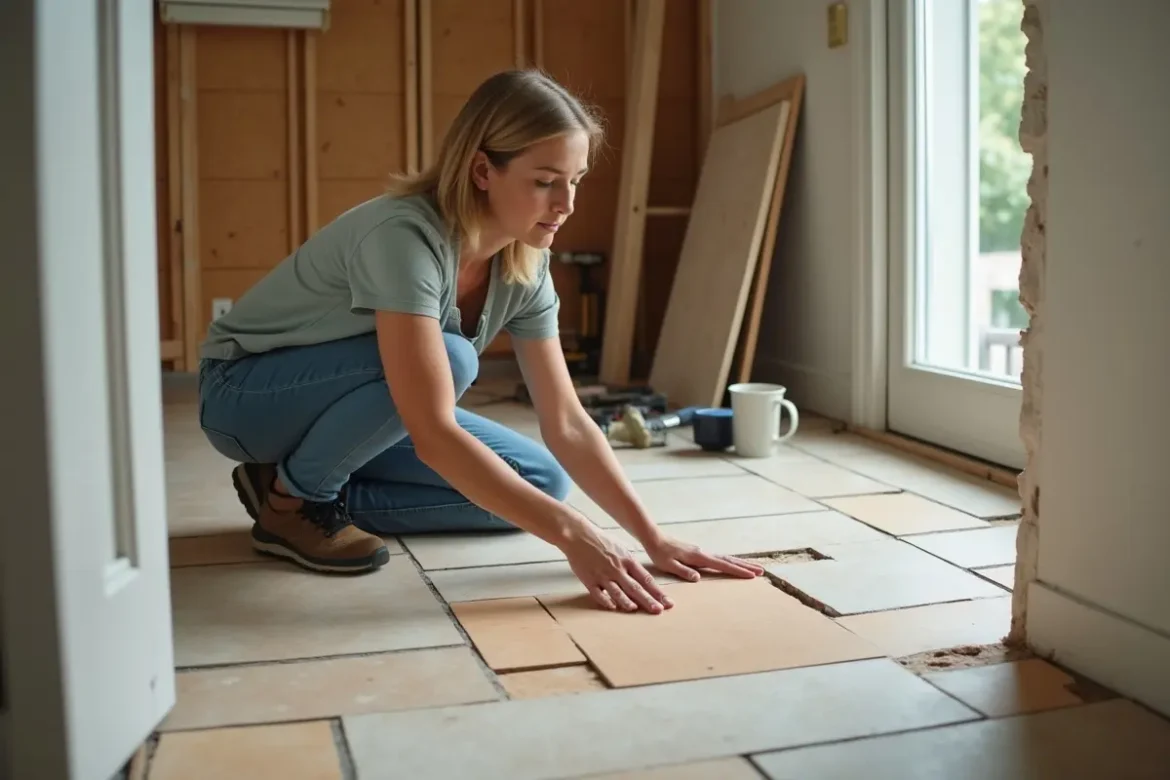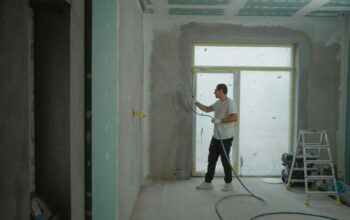
Ready to freshen up your home without spending a fortune?
Floor tiling is one of the best ways to upgrade any space. From your kitchen and bathroom to your hallway, adding new tiles can make a huge difference.
The problem?
Tile projects can get costly fast if you’re not careful with your choices.
Don’t worry, though. There are plenty of budget floor tiling ideas that look fantastic and don’t empty out your wallet. With a little creativity and some elbow grease, you can achieve the floor of your dreams without breaking the bank.
In This Guide, You’ll Discover:
- Why Floor Tiling Makes Sense On A Budget
- Smart Tile Material Choices That Won’t Drain Your Wallet
- DIY Installation Vs Hiring Professionals
- Budget-Friendly Tiling Techniques
Contents
Why Floor Tiling Makes Sense On A Budget
Floor tiling might seem like an expensive investment at first glance.
However, when you consider the long-term benefits and value, it actually becomes one of the most cost-effective solutions available to homeowners.
Tiles are super durable and can last for decades with proper maintenance. They don’t need to be replaced like carpeting every 5-10 years or hardwood that needs regular sanding and refinishing. That means huge savings over time.
Plus, homeowner spending on home renovations increased by 82% from 2015 to 2024. Everyone’s investing in their houses right now. The costs to tile a floor can vary depending on the materials and installation method, but arming yourself with knowledge of your options empowers you to make the right decision for your budget.
Here are a few more reasons why tiling is a smart investment even on a budget:
- Increases your home’s value
- Easy to clean and maintain
- Water-resistant for kitchens and bathrooms
- Timeless style that won’t go out of fashion
And of course, with a few clever approaches, you can keep costs low and still end up with a professional-quality result.
Budget-Friendly Tile Material Options
All tiles are not created equal when it comes to pricing.
The material you select for your floor tiling is going to have the biggest impact on the total cost of the project. Some options cost an arm and a leg while others provide the same great look for a much lower price.
Ceramic Tiles
Ceramic tiles are the best bang-for-your-buck for budget-friendly flooring renovations.
Material costs for ceramic tiles typically range from £0.50 to £7 per square foot. They are easy to work with and come in an endless variety of designs and colours. They’re also very beginner-friendly if you’re planning on taking on the installation as a DIY project since they’re more forgiving of mistakes.
Ceramic tiles are ideal for kitchen floors, bathroom floors, entryways, laundry rooms, and anywhere else you want an easy-to-clean tile floor. The only downside is that they aren’t quite as hard-wearing as porcelain. But for most residential applications, ceramic will last you for years.
Vinyl Tiles
Want to cut your costs even further?
Vinyl tiles are insanely cheap, coming in at only £2 to £14 per square foot. Modern vinyl tiles look shockingly realistic, so you can find styles that mimic natural stone, wood, or even ceramic. Vinyl tiles are a breeze to install (even for beginners), comfortable underfoot, water-resistant, and very low-maintenance.
The tradeoff is that they can scratch and scuff easier than ceramic or porcelain. But if you stick to lower-traffic areas, vinyl will work just fine.
Porcelain Tiles
Need something more hard-wearing?
Porcelain tiles are a step up in terms of cost but still affordable for most budgets. They are denser, harder, and more moisture and stain-resistant than ceramic. This makes porcelain the better choice for high-traffic areas or spaces that see a lot of water exposure.
Porcelain tiles typically cost between £3 and £10 per square foot for basic styles. That’s a bit pricier than ceramic, but the increased durability often justifies the extra cost.
Smart Layout Patterns That Stretch Your Budget
Here’s a fun little secret that most folks don’t realize…
The pattern you choose for your tile layout can actually save you money. Simple patterns like straight lay or running bond require less cutting, waste less material, and take less time. That translates into lower costs.
Budget-friendly tile patterns:
- Straight lay (grid pattern)
- Running bond (brick pattern)
- Diagonal (adds interest without much added cost)
Stick to these easy patterns if you’re on a tight budget. Avoid complex layouts like herringbone or intricate mosaic patterns if possible. Those fancy designs use more materials and a ton of labour, which will drive up your costs quickly.
DIY Installation Vs Hiring Professionals
Here’s the million-dollar question…
Should you install the tiles yourself or hire a pro? The answer depends on your skill level, available time, and the complexity of the project.
The DIY Route
DIY tile installation can save you a good chunk of change on your overall project budget. Hiring professionals typically adds £3 to £20 per square foot in labour costs. That’s a pretty big difference!
DIY tiling makes sense when:
- You have basic home improvement skills
- The room has a simple rectangular layout
- You’re working with budget materials
- You have the right tools (or can borrow them)
There are tons of online tutorials that guide you through each step of the process. Just be sure to properly prepare the subfloor, use the correct adhesive for your tile type, allow adequate drying time before grouting, and measure twice, cut once.
When To Hire A Pro
Sometimes it’s better to leave tile installation to the pros.
Professional installation makes sense for tricky layouts, large rooms, or high-end materials. You don’t want to botch a DIY job and waste money on ruined tiles.
Hire an expert for bathrooms with complex waterproofing needs, large open-concept areas, natural stone tiles, or intricate patterns. Get quotes from multiple contractors and compare to find the best price. 44% of homeowners are planning on spending more on renovations in 2024 than they did in 2023, so don’t be afraid to negotiate a great deal.
Money-Saving Tiling Strategies
Want to wring every last penny out of your tiling budget?
Here are some practical tips to help you save cash without sacrificing quality.
Buy In Bulk
Ordering all your materials at once usually nets you bulk pricing discounts. Call your tile supplier directly and ask about special rates for large orders. You can save hundreds of pounds on a big project this way.
Shop Sales And Clearance
Tile stores often discount discontinued collections and overstock items to make room for new inventory. These tiles are 100% fine – they just need to clear out more expensive, in-demand styles. Check online and in-store clearance sections for incredible deals.
Choose Larger Tiles
Bigger tiles cover more area with less grout needed between pieces. This reduces both material costs and installation time. A 12×24 inch tile does the job of multiple 4×4 inch tiles in a fraction of the time.
Prep The Space Yourself
You can save money by prepping the room for installation yourself even if you hire pros for the tile work. Clear the space, clean the subfloor thoroughly, and remove old flooring yourself. Contractors typically charge £2-3 per square foot for this prep work.
Time Your Project Right
Labour rates are often lower during off-peak seasons. Consider scheduling your tiling project for autumn or winter when contractors are less busy and more willing to offer discounts.
Final Thoughts On Budget Tiling
You don’t have to spend a small fortune to have beautiful tiled floors in your home.
By selecting more affordable materials like ceramic or vinyl, keeping patterns simple, and considering DIY installation – you can drastically cut your costs. The key is planning ahead and making smart decisions about where to splurge and where to pinch pennies.
Floor tiling is one of those home improvement projects that pays off year after year. Your new tiles will look great, add value to your house, and last for decades. All while staying within your budget, of course.
Ready to get started? Pick your tiles, gather your tools, and transform those floors!



